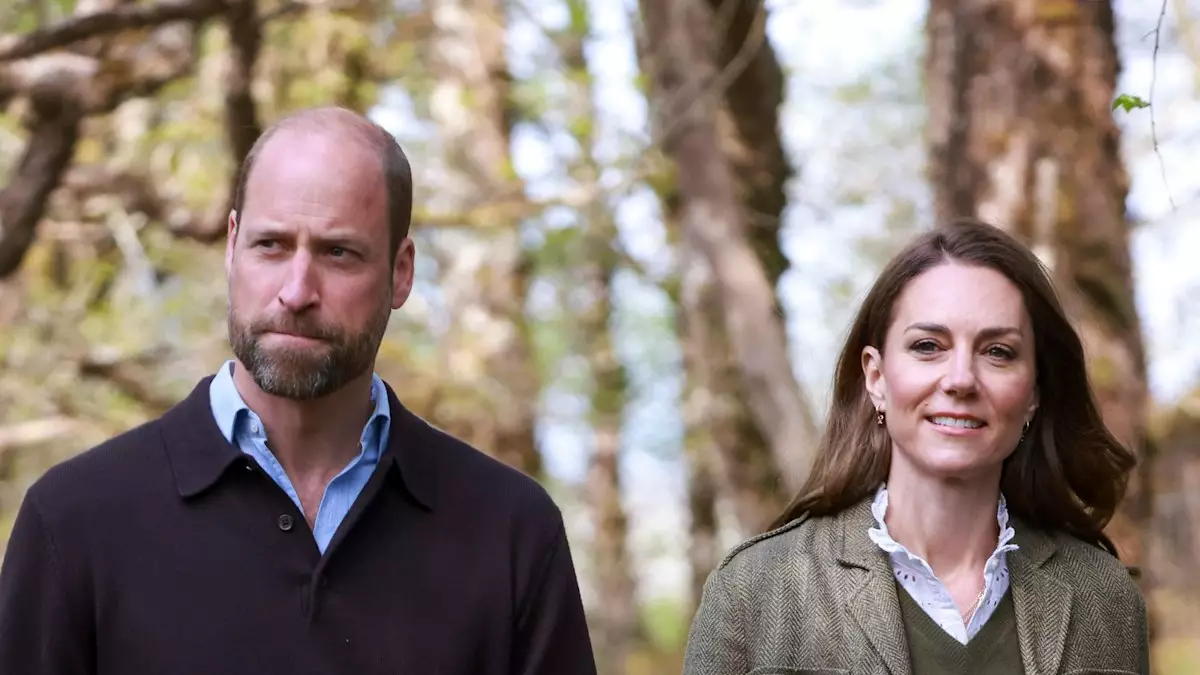During their recent anniversary trip, the Prince and Princess of Wales illuminated the significance of environmental stewardship and community ties in the picturesque Scottish Isles. Their visit to the Ardura Community Forest was not merely a ceremonial affair; it was a genuine commitment to environmental advocacy and sustainable living. Meeting with the Countryside Rangers from the Mull and Iona Ranger Service, they set a potent example of how royalty can transcend traditional roles, engaging actively with conservation efforts.
In a world increasingly plagued by environmental challenges, the symbolic gestures of world leaders carry weight. The support announced by The Royal Foundation of The Prince and Princess of Wales for the Mull and Iona Ranger Service is a critical step towards ensuring that conservation initiatives have the resources they need to thrive. Highlighting the essential work of local rangers not only raises public awareness but also empowers these often-overlooked guardians of nature to continue their pivotal role in safeguarding the land.
The Power of Community Engagement
As part of their itinerary, the royal couple’s adventure to the Isle of Iona aboard a public ferry signals another vital theme: community engagement. By choosing public transportation, they subtly send a message about the importance of accessibility and connectivity within communities, especially for islanders who depend on ferries for their essential needs. It’s a reminder that even the most secluded locations deserve attention and support, and the royal couple intends to ensure that Iona’s residents’ voices are heard.
Their hands-on approach during their visit to Tobermory speaks volumes about their commitment to authentic community connection. When the couple participated in painting and mural projects at Aros Hall, they exemplified the belief that leadership involves rolling up one’s sleeves and contributing, rather than merely observing from a distance. The Princess’ delight in painting a mural—and the light-hearted banter about having “found Banksy”—illustrates how such engagements can resonate with the public, allowing people to relate on a human level.
Culinary Traditions and Local Flavors
Furthermore, their culinary experience at Croft 3 demonstrated an understanding of the power of food as a means of unity. By cooking with local farmers and engaging with children from Ulva Ferry Primary School, William and Kate took part in a convivial gathering that celebrated local produce and traditional recipes. The preparation of home-made haggis, alongside other local delicacies, is not just about food; it encapsulates a larger narrative about culture, heritage, and the importance of embracing local traditions.
Food has this unparalleled ability to bridge gaps, and the royal couple’s inclusion of local farmers and school pupils in this communal meal builds rapport and solidarity among diverse groups. It’s initiatives like these that resonate deeply with community members, reinforcing the royal couple’s image as approachable figures who genuinely care about the people they serve.
A Blueprint for Modern Monarchs
In these interactions, the Prince and Princess of Wales are crafting a blueprint for modern monarchy—one that is centered on compassion, environmental responsibility, and community engagement. Their actions during this anniversary trip transcend mere formality and indicate a deeper understanding of the challenges faced by rural communities and the global environment.
This approach is particularly refreshing in an age when public figures often are criticized for their disconnect from the populace. By immersing themselves in the local culture of the Scottish Isles, the couple signifies their commitment to not only preserving natural habitats but also fostering a tangible sense of belonging and partnership with the people.
Together, these elements reaffirm the role of the monarchy as not just a symbol of tradition, but as an active participant in the progress of society. The challenges posed by climate change and community disconnect are significant; however, with leaders willing to champion these causes, there is hope for a more harmonious relationship between humanity and the natural world.

